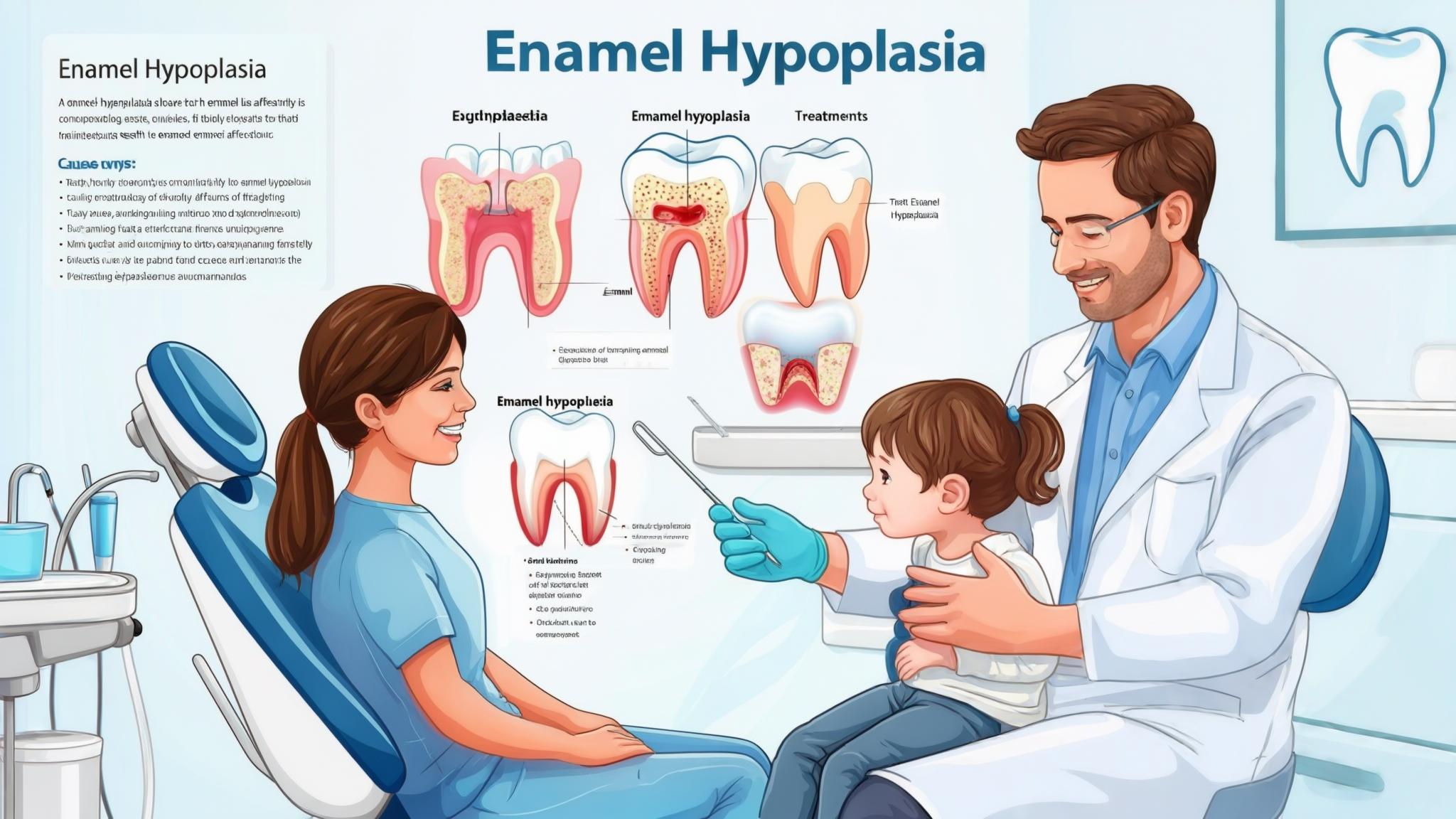Understanding Enamel Hypoplasia in Kids
What is Enamel Hypoplasia?
Imagine the enamel of your child's teeth as a protective shield. This hard, outer layer is crucial in defending teeth against decay and damage. Enamel hypoplasia refers to a condition where this shield is thinner or has defects, making it less effective. Understanding enamel hypoplasia is vital in children's dentistry because it can affect dental health significantly, leading to potential complications if not addressed early.
This article will guide you through the intricacies of enamel hypoplasia, from its causes and symptoms to its effects and treatment options.
Understanding Enamel Hypoplasia
The Role of Enamel in Dental Health
Enamel is the hardest substance in the human body, covering the outer layer of each tooth. It protects teeth from the wear and tear of daily activities such as chewing, biting, and exposure to acids. When enamel is compromised, teeth become vulnerable to decay and other issues.
Defining Enamel Hypoplasia
Enamel hypoplasia is a developmental condition where the enamel is either thin or not fully formed. This can result in visible defects on the tooth surface, such as pits, grooves, or discoloration. The condition can be caused by a variety of factors, which we'll explore further.
Causes of Enamel Hypoplasia
- Genetic Factors: Some children may inherit conditions that affect enamel development.
- Environmental Influences: Nutritional deficiencies, illnesses during pregnancy or early childhood, and trauma to primary teeth can all contribute.
- Medications: Certain medications taken during pregnancy or infancy can impact enamel formation.
Types of Enamel Hypoplasia
- Localized Hypoplasia: Affects specific teeth.
- Generalized Hypoplasia: Affects multiple teeth.
- Severity Levels: Can range from mild discoloration to severe structural defects.
Causes of Enamel Hypoplasia
Genetic Factors
Genetic conditions, such as amelogenesis imperfecta, can lead to enamel hypoplasia. These conditions affect the proteins involved in enamel formation, leading to defects.
Environmental Influences
- Nutritional Deficiencies: A lack of essential nutrients like vitamin D and calcium during critical periods can hinder enamel development.
- Illnesses: Infections or high fevers during pregnancy or early childhood can disrupt enamel formation.
- Trauma: Injuries to baby teeth can affect the developing permanent teeth underneath.
Impact of Medications
Some medications, particularly those taken during pregnancy or early childhood, can interfere with the normal development of enamel.
Symptoms and Diagnosis
Visual Signs of Enamel Hypoplasia
Parents may notice changes in their child's teeth, such as:
- Color Changes: White or brown spots on teeth.
- Texture Changes: Rough surfaces or small pits.
Diagnostic Procedures
- Dental Examination: A dentist will visually inspect the teeth for signs of hypoplasia.
- X-rays and Imaging: These tools help assess the extent of enamel defects.
Effects of Enamel Hypoplasia on Children’s Teeth
Impact on Dental Aesthetics
Discoloration or defects can affect the appearance of a child's smile, which may impact their confidence.
Increased Risk of Dental Caries
Thinner enamel makes teeth more susceptible to cavities, as it offers less protection against bacteria.
Potential for Sensitivity and Discomfort
Children with enamel hypoplasia may experience sensitivity to hot or cold foods and drinks.
Long-term Implications
If left untreated, enamel hypoplasia can lead to more significant dental problems, including increased wear and tooth decay.
Treatment Options
Preventive Measures
- Good Oral Hygiene: Brushing with fluoride toothpaste and regular flossing are crucial.
- Regular Dental Check-ups: Early detection and management can prevent complications.
Treatment Strategies
- Fluoride Treatments: Strengthen enamel and help prevent decay.
- Dental Sealants: Protect the tooth surface from bacteria and acids.
- Restorative Procedures: Fillings or crowns may be necessary for severe cases.
Role of Pediatric Dentists
Pediatric dentists specialize in managing conditions like enamel hypoplasia, providing tailored care and advice for children.
Conclusion
Understanding enamel hypoplasia is crucial for maintaining your child's oral health. Early detection and intervention can prevent more severe dental issues down the line. If you suspect your child may have enamel hypoplasia, seek professional dental advice to ensure they receive the best care possible.
References
- "Amelogenesis Imperfecta and Enamel Hypoplasia: A Review" - Journal of Dental Research
- "Nutritional Influences on Enamel Development" - Pediatric Dentistry Journal
- "The Impact of Illness and Medications on Enamel" - American Journal of Dentistry

